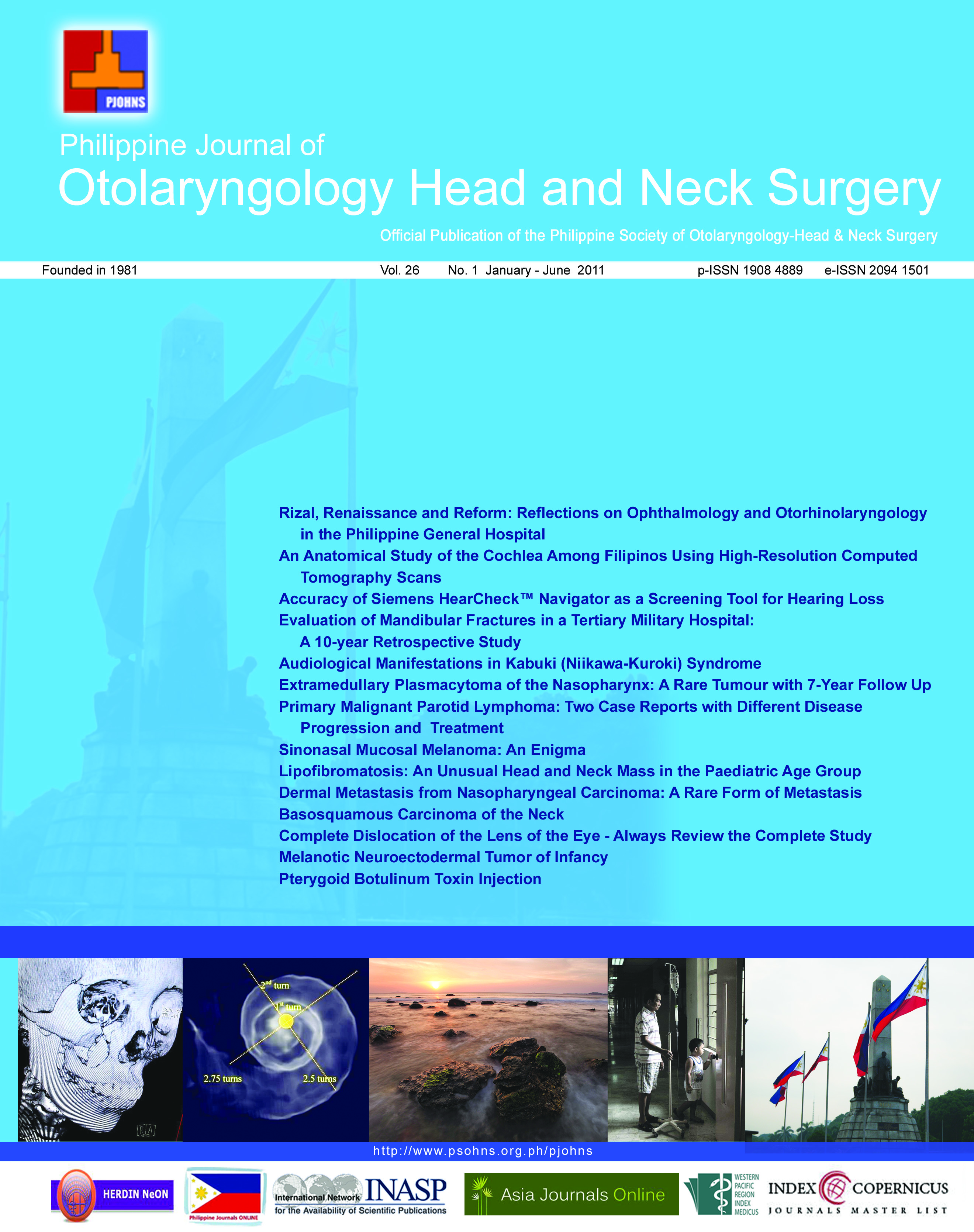Complete Dislocation of the Lens of the Eye - Always Review the Complete Study
DOI:
https://doi.org/10.32412/pjohns.v26i1.611Keywords:
Eye, FaceAbstract
This 37 year-old male patient underwent high resolution CT imaging of the face including paranasal sinuses following trauma. Computed tomography (CT) has a well-established role in the assessment of the facial bones in the context of trauma, in particular for fractures involving the paranasal sinuses and orbit. High resolution imaging permits isotropic reconstruction in multiple planes. Its use in imaging the contents of orbit itself is more select, with both direct clinical examination and even orbital ultrasound used to assess the globe and lens of the eye.1
Traumatic dislocation of the lens of the eye may entail the partial or complete translocation of the lens from its normal position within the anterior aspect of the eye.2 The high attenuation lens ‘floats’, within the vitreous of the globe (Figures 1, 2 and 3).
Following trauma to the face the injuries may be multiple and cross sub-speciality boundaries, but one should be alert to all injuries. In reviewing CT images one should be forensic in the review of all the anatomy covered, even it is not related to the original clinical query or not pertinent to one’s own clinical speciality.
As an old mentor once told me, ‘Before you take the film down, have one last paranoid look.’
Learning Point: Always review the entirety of the imaging performed
despite the focus of one’s clinical or speciality interest.
Downloads
Published
How to Cite
Issue
Section
License
Copyright transfer (all authors; where the work is not protected by a copyright act e.g. US federal employment at the time of manuscript preparation, and there is no copyright of which ownership can be transferred, a separate statement is hereby submitted by each concerned author). In consideration of the action taken by the Philippine Journal of Otolaryngology Head and Neck Surgery in reviewing and editing this manuscript, I hereby assign, transfer and convey all rights, title and interest in the work, including copyright ownership, to the Philippine Society of Otolaryngology Head and Neck Surgery, Inc. (PSOHNS) in the event that this work is published by the PSOHNS. In making this assignment of ownership, I understand that all accepted manuscripts become the permanent property of the PSOHNS and may not be published elsewhere without written permission from the PSOHNS unless shared under the terms of a Creative Commons Attribution-NonCommercial-NoDerivatives 4.0 International (CC BY-NC-ND 4.0) license.



